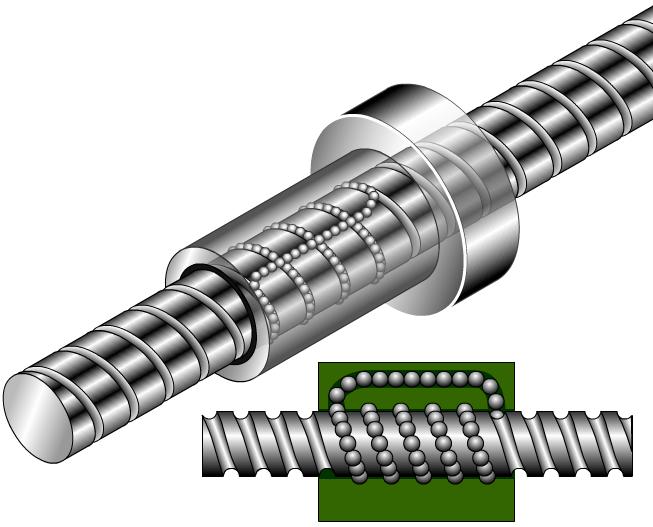Ball Screws
Ball screws are actuators. Actuators convert an input into motion.
Ball screws convert rotary motion into linear motion and vice versa. The design of the ball screw eliminates backlash and minimises friction between the screw and nut. Instead of interlocking internal and external screw threads, as in other types of machine screws, the ball screws trap ball bearings in the semi circular helical grooves between the screw and nut.
The screw part of the system is a ground shaft with a semi circular helical groove cut into it. The nut part of the system consists of a tubular shaft with a circular helical groove cut into the inside of it. There is a channel in the nut that connects the end of the groove to the start of the groove, making the nut a closed circulation system. These grooves and the channel are called raceways. The ball bearings roll inside the raceways.
The finely ground ball bearings create very little friction between the balls, the screw shaft and the ball assembly unit, i.e. the nut. The ball assembly unit moves freely along the shaft.
Ball screws are used wherever rotary motion has to be converted into linear motion with a high degree of precision. They are used in computer numerically controlled (CNC) machines, in some power steering systems and other precision applications.

|
|||||

